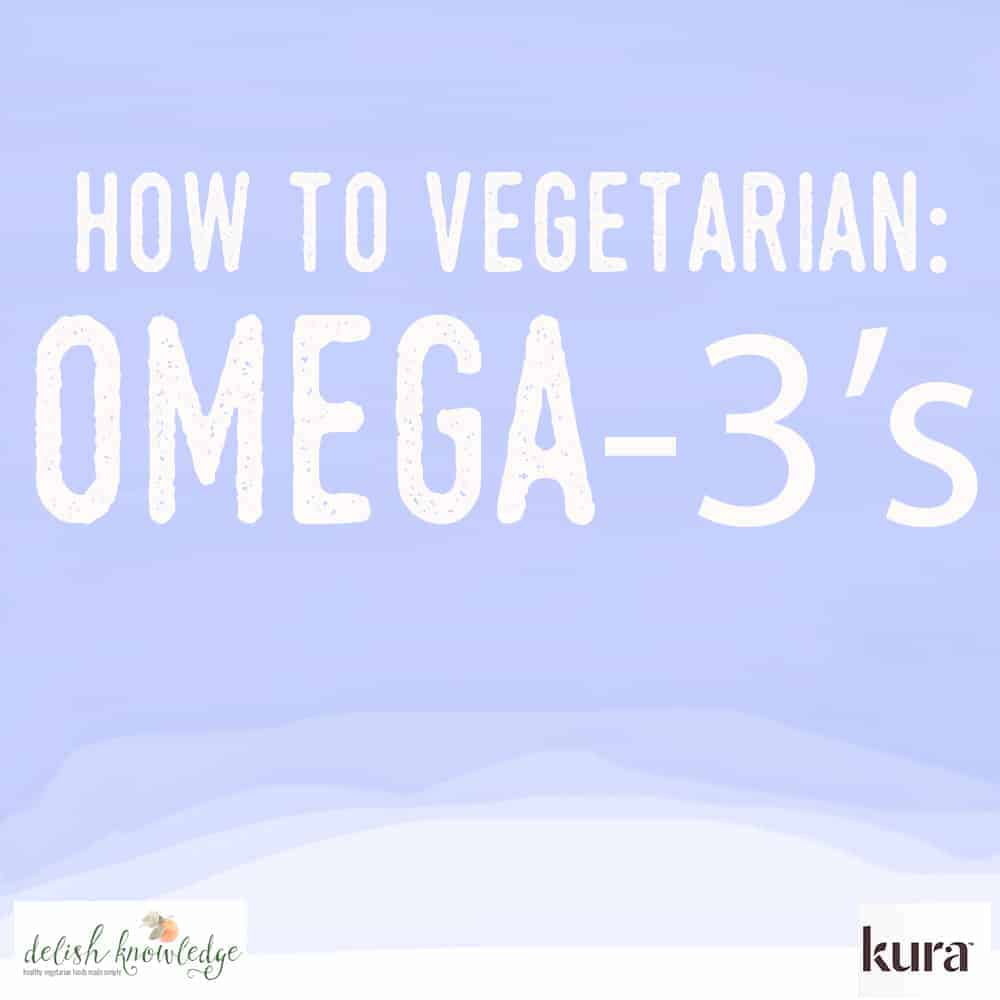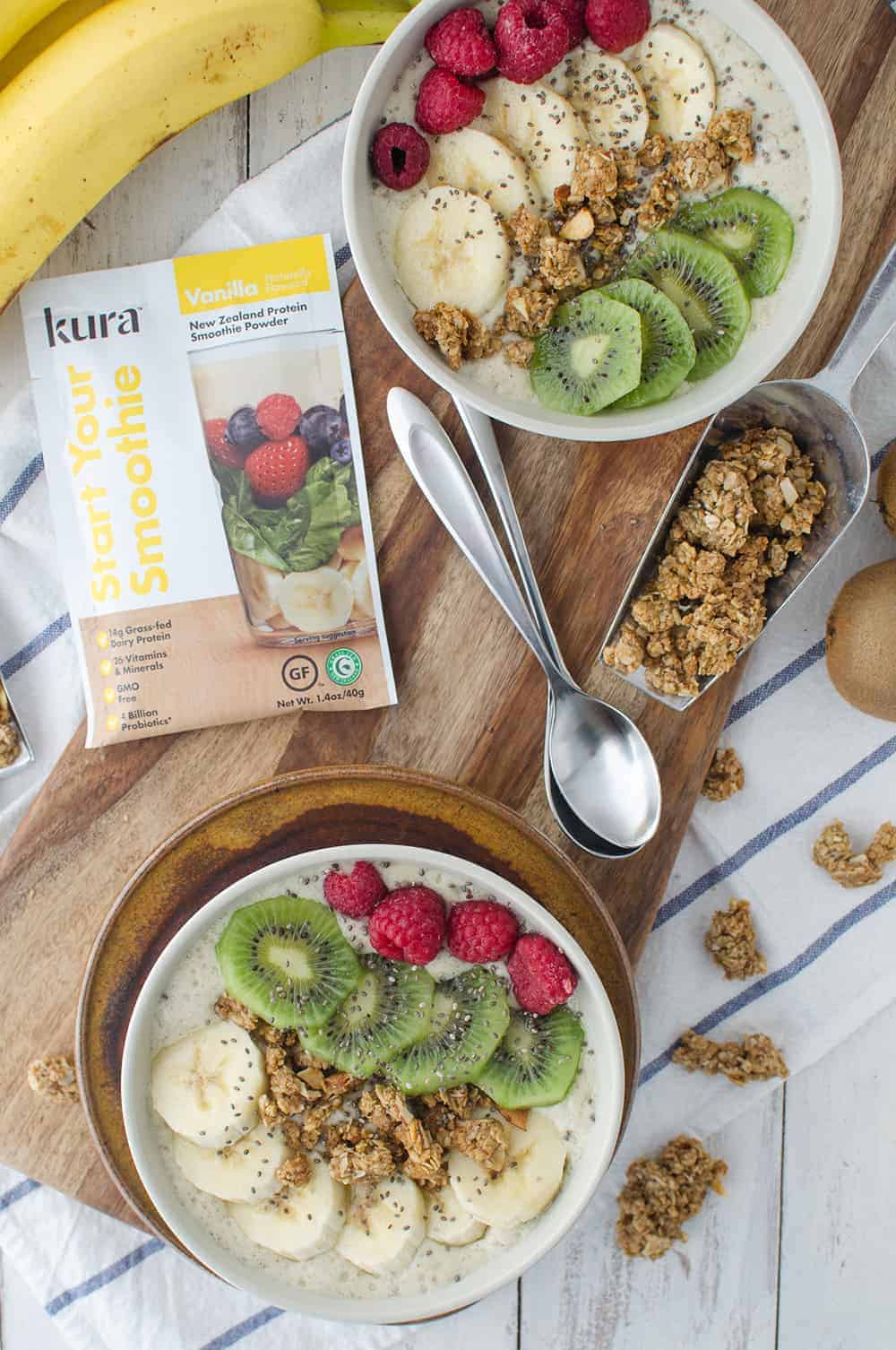How to Vegetarian: Omega-3 Fatty Acids
Are you concerned about getting enough omega 3 fatty acids as a vegetarian or vegan? Here is everything you need to know about getting enough omega 3s, sources of omega 3s, and recipes from a registered Dietician.
How to Vegetarian: Omega-3 Fatty Acids
What are Omega-3s (and why you need them):
Omega-3 fatty acids are considered essential fatty acids. Which means that they are necessary for our health and our bodies cannot make them- we have to get them through food. Having enough omega-3 fatty acids in the diet is critical for brain function, lowering harmful lipid levels (LDL cholesterol and triglycerides), reducing the inflammatory response in the arteries and many other functions related to reducing the risk of cardiovascular disease and cancer. In basic terms, we need them and most of us aren’t getting enough.
For many of us, when we hear the word omega-3 fatty acids, we tend to think primarily of fatty fish (especially mackerel, salmon, tuna, and sardines). While these fish are all excellent sources of omega-3 fatty acids, many people don’t consume fish- either for environmental, ethical, economical or taste preferences. So, what’s a omega-3 needing vegetarian to do?
Let’s first break down the various types of omega-3 fatty acids, ALA, EPA and DHA.
Flaxseeds, walnuts and a handful of other plant foods provide an omega-3 fat called alpha-linolenic acid (ALA), an essential nutrient. It’s similar to the other omega-3’s, eicosapentaenoic acid (EPA) and docosahexaenoic acid (DHA) but your body must convert ALA into EPA and DHA. Depending on which study you reference, conversion rates for ALA into the other two omega-3’s are fairly low. However, there are big benefits in consuming ALA’s (even if you do eat fish). One study suggests that people who eat a diet high in alpha-linolenic acid are less likely to have a fatal heart attack and another found that women who ate high levels of ALA had a 46% lower risk of sudden cardiac death than those who ate a lower amount. Population studies show us that as people eat more foods with alpha-linolenic acid, heart disease deaths go down. So, whatever side of the vegetarian fence you are on, I think we can all agree that we need to be eating more ALA’s. Best sources are flaxseed and flax oil, chia seeds, hempseed oil, walnuts or walnut oil, canola oil, KURA protein powder and full fat soyfoods.
The other omega-3 fats are DHA and EPA, two closely-related fats typically found in fatty fish, and to a lesser extent in some sea vegetables. Technically, they are not considered essential nutrients because we can synthesize these fats from ALA. There is a lot of discussion on how much we need for optimal health, but most studies do show intake of these fats decreases risk of dementia, depression and heart disease. For my veg-head friends and clients, I tend to recommend including plant-based sources (derived from algae) of DHA and EPA either in food or supplement form.
The important thing to remember is that the two types of omega-3 fats are not interchangeable. Even if you are taking a supplement with DHA and EPA, you still need a source of ALA (like flax or chia seeds) and even with a good source of ALA in your diet, you may benefit from a DHA and EPA supplement (especially those with a higher risk of heart disease.)
Inflammation & Omega-3s:
I’m going to preface all of this by saying that inflammation is a really complex topic; there are so many things that contribute to how inflammation presents in the body including genomics, age, gut health, foods and environmental stressors. In fact, there really isn’t any one food that will act “anti-inflammatory” for everyone- even superfoods like turmeric, omega-3s, and kale. I see this often in my food-sensitivity testing clients who come back very reactive to items like spinach, salmon, almonds and more. So, even though these foods will be a healthy option for most people, inflammation is personal and will change from person to person.
Omega-3 fatty acids (especially DHA and EPA) have anti-inflammatory properties and are often used in the management of autoimmune diseases, heart disease, cancer, and more. For the average person, it’s not so much about getting enough omega-3s in the diet, but getting the right ratio of omega 3 fatty acids: omega 6. Both omega-3 and omega-6 have anti-inflammatory properties, but consumed in too high amounts or in the wrong ratio, and they become pro-inflammatory. It’s been said that the average american eats a ratio of 20:1 omega 6 to omega 3, when it should be closer to 1:1-4:1. Omega 6 fats are found in vegetable oil, grape seed oil, soybean oil, sunflower oil, and corn oil. Considering where the two fats are found, I think it’s pretty clear how easy it is to overdue it on the omega 6 fatty acids and come up lacking in omega 3s.
Vegetarian sources of Omega-3’s & Favorite Recipes:
- Smoothie Bowls: While I do take a daily supplement that contains EPA and DHA, I also rely on my omega 3 intake from food- specifically in my morning KURA smoothie. KURA uses both golden flax and algal oil, two vegetarian sourced omega-3’s. More specifically, each serving contains 378mg of alpha-linolenic Acid (ALA Omega–3), 126mg of linoleum acid and 32mg of DHA. I love KURA straight from the blender (affiliate) or in a bowl topped with chia seeds, hemp seeds and fresh fruit. (Grab the recipe for my Kiwi Smoothie Bowl and Mango smoothie bowls)Besides online retailers (like Amazon), you can find KURA in Fresh Thyme, Vitamin Shoppe, select Whole Foods and many more retailers coming soon. In fact- KURA will be in 3,000 CVS stores by the end of the month!

- Flax oil: While flax oil is a great source of ALA, it’s also very unstable and therefore quickly to oxidize. I buy small bottles of flaxseed oil so that I am only using exactly what I need and am not exposing too much of the oil to heat and light- which turns the healthy fat rancid. Store it in the fridge! Same goes for flaxseed. I prefer to purchase my flaxseeds whole and then grind them into a meal as I use it, but I know this is also a giant pain. While whole flax seeds are pretty, you need to grind the seed to release the oil and therefore reap the benefits. If you buy already ground meal, store it in the freezer to help keep the fats stable. Try flax seeds in my Life-Changing Chocolate Cookies and PB&J Oatmeal Bars.
- Chia seeds: I adore the humble chia seed, even if I can’t help but sing “cha-cha-cha-chia” every time I eat them. Tiny in size, maximum benefits. Enjoy in a chia seed pudding, jam, or this oatmeal parfait!
- Hemp seeds: Are you noticing a trend here with the seeds? Just like chia, flax (and walnut), hemp seeds are a great source of omega-3 fatty acids. I prefer them sprinkled on a salad or smoothie bowl. They offer great texture with only a slightly nutty flavor.
Tell me: what questions do you have on omega-3s? Did anything surprise you? What’s your favorite way to eat ALAs?
I’ll be back next month discussing sports nutrition for a vegetarian diet.



